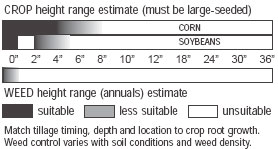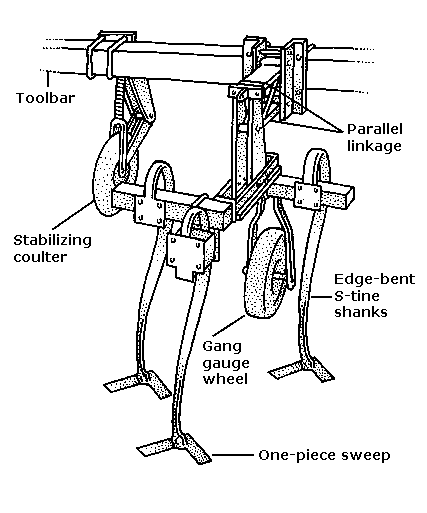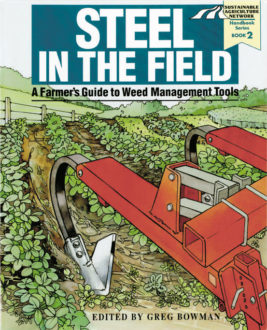Agronomic Row Crops
Moderate-Residue Cultivator

Units intended for conservation tillage conditions (tilled residue with 30 percent coverage) or an untilled corn crop yielding up to 120 bushels/acre in loose to moderate soils with occasional stones up to 10 pounds.
Overview: These cultivators are a popular step up from a conventional cultivator for their ability to handle moderate weed pressure and moderate residue for less cost than a high-residue tool. S-tine tools have three to five shanks per row middle and generally weigh less than single-shank units. Choose sweep shape for your desired weed impact (i.e., bury, slice or uproot) and degree of soil/residue mixing. (See 'Cultivator sweep options,') Operating depth is about 1".

Design Features: Compared with low-residue S-tine cultivators, these units usually have higher toolbar clearance (24" to 32") and longer front-to-back clearance (40" to 52"), allowing better flow between shanks, and between shanks and coulters, and overall stronger construction. Most have parallel linkage. Close-coupled, single-shank units are highly maneuverable and reduce power needed to lift them up. A residue-cutting coulter and residue-pinning gauge wheel design (see illustration, page 19) increases residue capacity.
Model for comparison: 15' rigid frame for 6 rows on 30" centers (6R30)
Includes parallel linkage; S-tine shanks; sweeps; two toolbar-mounted stabilizing coulters; gauge wheels for each gang.
Rec. PTO HP: 70 to 120
Speed: 5 to 8 mph
List price: $4,600 to $13,450 (Range reflects wide variation in structural strength and mass.)
Width range (all makers/all models): 5' to 44'
Sources: 2, 13, 18, 21, 44, 50, 55, 62, 64, 74, 78
TIP: Sizing a cultivator and selecting its tooling are choices influenced by hydraulic lift-assist (page 26), tractor size and hydraulic-system capacity, front-weighting, tractor tire ballast and prevailing soil and residue conditions. Cultivators are usually the same width - or half the width - as the planter.
